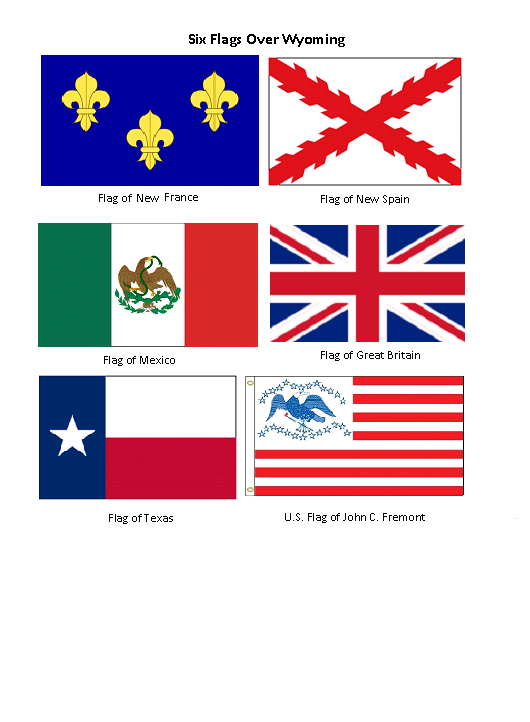Six Flags over Wyoming
Americans celebrated Flag Day this year in many ways. In Cody, Wyoming a proud community celebrated by hosting a Field of Honor® display of U.S. flags which took place from June 11th through June 17th at the Park County Complex.
Cody residents and visitor walked amid eight hundred full size American flags posted to honor military, veterans, emergency first responders and others who make us proud to be Americans. In addition to bringing the Cody community together, this magnificent display of the Stars and Stripes, raised fund for the Cody Heritage Museum to benefit residents and visitor long after the 2012 Field of Honor® display has been removed from the Park County Complex.
The inspiring display included a group of historic flags to honor Wyoming’s heritage which reflects a vibrant and diverse population of today’s state. Six nations have claimed part of the land which is now Wyoming. Although several of these nations probably did not physically raise their flags over their claimed territories, the six historical flags in this display tell the story of how Wyoming came to be.
More than half of the northeastern portion of Wyoming was part of the land purchased from France in 1803. Several flags flew over French Louisiana. Displaying three gold fleurs-de-lis on a blue field, this French royal banner was the flag most commonly flown between 1534 and 1763.
As with the territory of New France, several flags flew over the Spanish territories of New Spain. The Cross of Burgundy served as the flag of Spanish Viceroys in the New World during the Spanish colonization of the Americas. Two roughly pruned red tree branches cross diagonally forming a Cross of Saint Andrew. The King of Spain chose this flag recalling the cross upon which Saint Andrew was crucified.
With Mexican independence Mexican flags replaced those of Spain in what was then called Upper California. Several flags flew over Mexico with the national colors of red, white and green most often shown. The national emblem appears on the central white portion of the tricolor and represents an Aztec legend telling the story of Mexica tribesmen who were commanded by their sun god to locate a city where they saw an eagle, with a snake in its beak, sitting upon a cactus, growing from a rock, and surrounded by water . When they saw this scene appear, they founded Mexico City on that spot. The nation’s name of Mexico is derived from the name of the Mexica tribe.
Although the State of Texas is big today, the Republic of Texas was even bigger. It included all of the Lone Star State and parts of five other states. A narrow finger of land jutting through Colorado joined a small square of Wyoming to the Republic of Texas which had won its independence from Mexico. The flag’s symbols and colors appear to come from the U.S. flag. Nevertheless, Texans used the single star as the emblem of their struggle for independence from Mexico. Today the Lone Star gives its name to the flag and state.
Both Great Britain and the United States claimed the area north of Mexico which was then known as the Oregon Territory. The British Union Flag of 1801, popularly known as the Union Jack, combines the Cross of St. George for England with the Cross of St. Andrew for Scotland and the Cross of St. Patrick for Ireland. A treaty between the U.S. and Britain in 1846 set the border placing all of what is now Wyoming under jurisdiction of the United States.
An officer in the U.S. Army’s Topographical Engineers, John Charles Frémont raised this unique Stars and Stripes flag on August 15, 1842 atop a peak he believed to be the tallest in the Wyoming’s Wind River Range which is known today as Frémont Peak. Made by his wife, Jessie Benton Frémont, the flag displays an eagle on a white canton where the blue field of stars is normally found. The eagle holds a peace pipe in his right talons and a bunch of arrows in his left. Above and below the eagle are two wavy rows of thirteen white stars outlined in blue, one star for each of the twenty-six states then in the U.S. Union. While the design many seem unusual, the flag actually follows the pattern of other flags presented by the Indian Department to native tribes as a sign of alliance and friendship.

